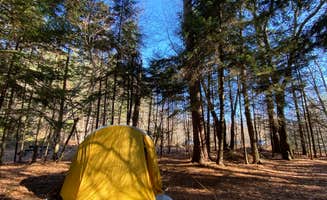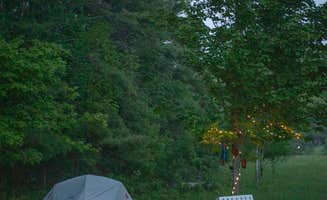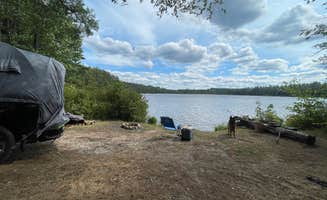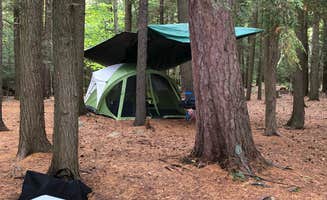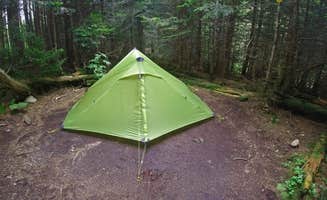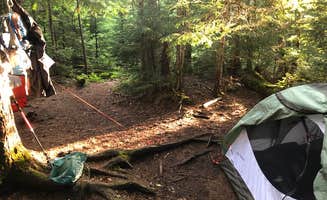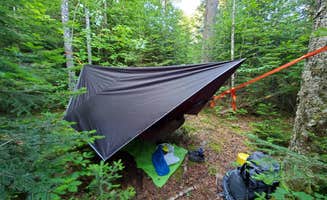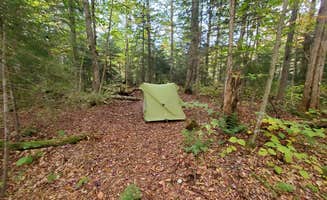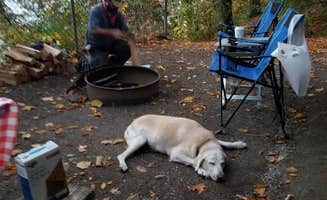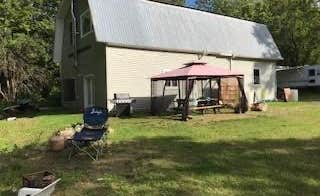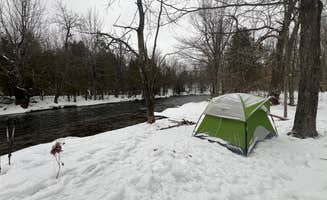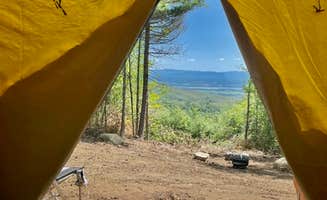Tent camping around Wilmington, New York typically involves elevation changes with campsites ranging from 1,200 feet at valley locations to over 2,700 feet in the High Peaks region. Water access varies significantly between sites, with many primitive camping areas requiring filtration systems for brook or lake water. Winter temperatures can drop below 0°F, while summer nights average 45-55°F even during warm daytime conditions.
What to do
Paddle the Saranac Lakes chain: Accessible only by water, Saranac Lake Islands Adirondack Preserve Campground offers secluded camping on private islands. "We rented a motorboat to get to our own private little peninsula on the middle saranac. One of the coolest experiences I've ever had in my life - surrounded by nature - water, woods, birds and fishing for pike, bass and sunfish!" reports one camper.
Climb Poke-O-Moonshine: The 2.4-mile trail near Poke-O-Moonshine provides spectacular views. "Easy distance to Poko-moonshine mountain and several smaller mountains. Beautiful location. Removed from trafficked roads, very quiet," notes a visitor who enjoyed the proximity to hiking trails.
Winter hike Mount Jo: The 2.3-mile loop trail is accessible year-round from Heart Lake and offers panoramic views of the High Peaks. Even in winter months, the trail remains popular as it's shorter than many nearby routes while still providing significant elevation gain and views.
What campers like
Island privacy: Campers at Saranac Lake Islands appreciate the natural isolation. "Our island had 4 other campsites on it and we barely saw or heard our neighbors," writes one reviewer who stayed at site #15. Another notes the "huge sites, a lot of privacy (nearest campsite in most cases is not even visible)."
Trailhead access: Wilderness Campground at Heart Lake serves as a starting point for multiple trails. "You can hike Algonquin, Iriquois, Wright Peak, and Mt. Jo all right from the campground," states one reviewer. Another adds, "We had a great one night stay at this campground last summer... our campsite (#10) was perfect."
Water features: Many sites provide immediate lake or river access. One camper at Jones Pond NYSDEC Primitive Campsites mentions, "Site #5 sits the furthest back and is also close to the water and accessible by car/suv/truck. The views from site #4 of the pond were beautiful."
What you should know
Bear precautions: Backcountry camping requires proper food storage. At MacIntyre Brook Falls campground, "Bear canisters required," states one reviewer plainly. This requirement extends throughout the High Peaks region.
Fire regulations: Rules vary by location. Fires are prohibited at some backcountry sites while allowed at others. One camper notes about Marcy Dam: "No firepits, and you cannot start fires here - bring your stove."
Reservations vs. first-come: Many primitive sites operate on first-come, first-served basis. For Jones Pond, a camper explains: "The sites are on a first come basis and are free to use. You can stay a maximum of three nights without a permit."
Terrain challenges: Access roads to some sites require appropriate vehicles. One visitor to Jones Pond warns: "The two track access road is rough and all dirt," while another confirms that for site #5, you "definitely need four-wheel-drive."
Tips for camping with families
Select lean-to options: These structures provide extra weather protection for kids. "Lean to camping at it's best! The lean to I had was right on the lake and on the edge of the campground," writes a visitor about Heart Lake Wilderness Campground.
Pack warm layers: Temperature drops can be significant even in summer. As one camper at Flowed Lands notes: "While we were there it poured non stop, so the trails were like a swamp." Another Heart Lake visitor advises: "Bring warm clothing for nights; temps can drop 30 degrees in hours."
Plan for noise levels: Some campgrounds maintain stricter quiet hours than others. A Heart Lake camper observed: "There were a lot of campers, but the sites are spaced out and people were very respectful of noise/lights/other campers."
Tips from RVers
Limited large rig options: Most tent camping near Wilmington has minimal RV accommodations. At Jones Pond, "Site #1 is near the entrance and near the road. It is the only site that would be accessible for larger rigs such as an RV."
Access road conditions: Many forest roads leading to tent camping areas have rough terrain. At Adirondack Acres Trail and Camps, "If you have a good 4x4 and some driving skills, you can reach the river with your car. You will drive in what looks like an enchanted forest."
Self-containment essential: Minimal facilities exist at most primitive sites. Nearly all backcountry and many roadside tent camping areas lack hookups, with limited toilet facilities and no shower options except at established campgrounds.


